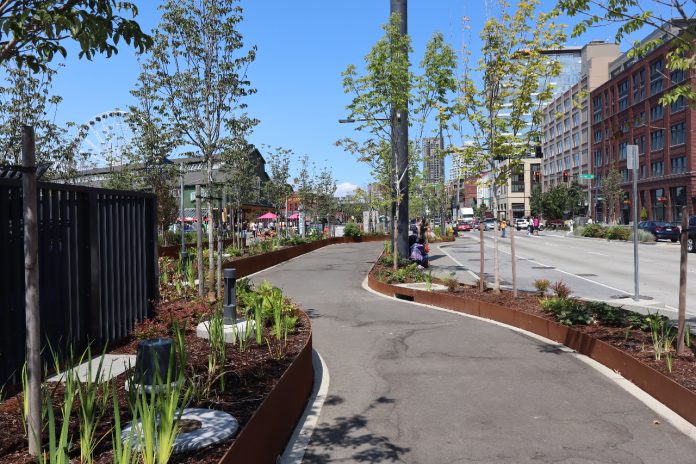
The Overlook Walk is set to open this fall ahead of schedule, but the bike path opening lags behind.
With projects on the Seattle Waterfront nearing completion, one question keeps popping up: when will the city’s new flagship bike facility along Alaskan Way finally open? While many stretches of the two-way facility between Colman Dock and the Seattle Aquarium look like they’re getting close to completed, anyone looking to take a bike down to the waterfront will have to wait several more months. Seattle’s Office of the Waterfront tells The Urbanist that they don’t expect the bike path to open until the tail end of 2024.
“While most of the bike lanes have been paved, we still have work to complete before we can open them, including completing the planters and other work adjacent to the bike lanes, striping and other markings, and getting the bike signals up and running,” Office of the Waterfront spokesperson Iris Picat told The Urbanist this week, saying they plan the bike lanes “by the end of this year.”
The central waterfront bike path, which is already open south of Yesler Way, is one of the most highly anticipated elements of the $806 million waterfront revamp, funded through a combination of state funding, city funding, and taxes collected as part of the waterfront’s Local Improvement District (LID). Once it finally opens, people on bikes will have a fully separated route from Belltown to the Portside Trail that extends to the West Seattle Bridge. A separate bike lane connecting from just north of the aquarium to the Elliott Bay Trail in Myrtle Edwards Park, built by the Seattle Department of Transportation (SDOT) is set to start construction later this year and complete the waterfront bike network.
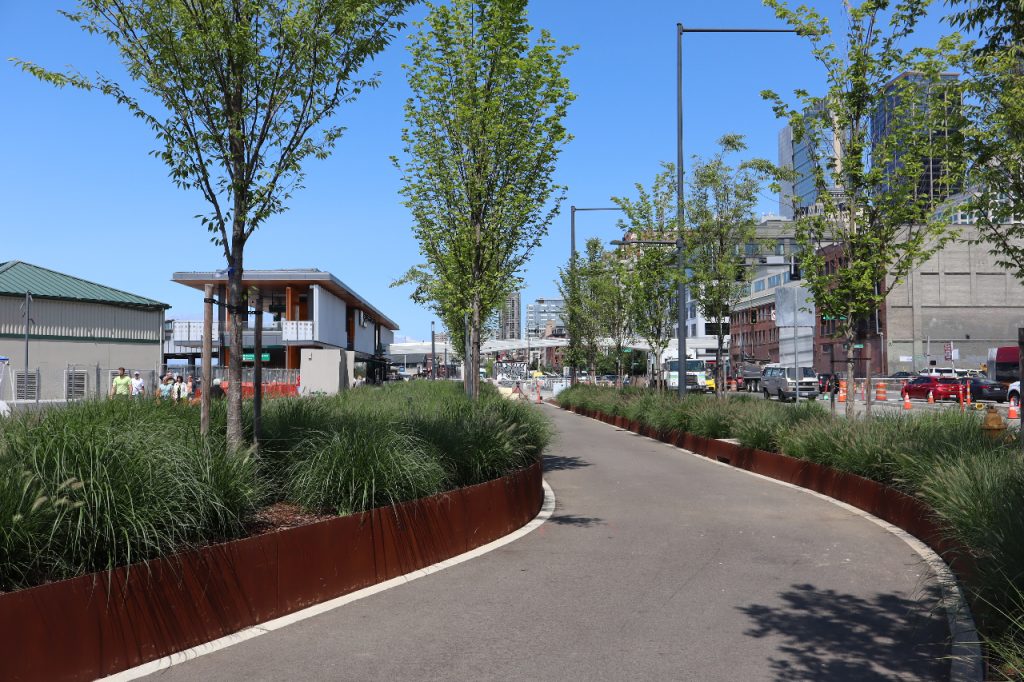
Bike access to the waterfront over the long construction period has remained spotty at best, even as the phasing of work has prioritized vehicle access to the area and always maintained pedestrian access. With the demolition of the Alaskan Way Viaduct in 2019, the winding bike path underneath it — which was far from ideal, and often involved cyclists dodging drivers trying to find parking — closed, and people on bikes have been forced to find their own way through the dynamic environment.
The bike path being one of the final elements of the project to open illustrates the degree to which bike access has been an afterthought for the waterfront project. The entire waterfront revamp is a public space improvement project built around a major road project, but certain types of mobility have been prioritized more than others during the duration of construction (and to some extent after it). But there is a light at the end of the tunnel.
Before the bike path opens, the City of Seattle expects to open some of the other high profile elements along the waterfront, including the Overlook Walk, a park-like pathway extending from the back door of Pike Place Market across Alaskan Way. Originally set to open next year, the project is running ahead of schedule and will open to the public this fall, Picat said. The Seattle Aquarium’s new Ocean Pavilion, which includes part of the Overlook Walk on its roof, will have its grand opening next month, on August 29.
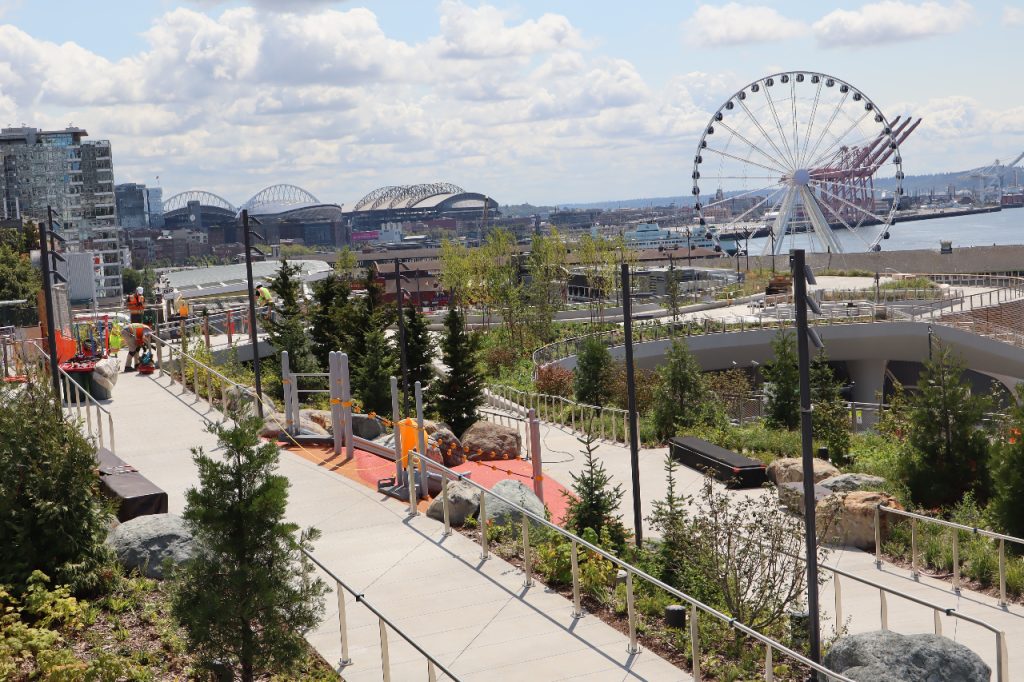
Paired with the Overlook Walk are the Salish Steps, a gathering space wedged in between the Overlook Walk and the Aquarium where visitors can stop to enjoy the water view. For folks who cannot climb stairs, there will be one elevator on top of the Aquarium building and another on the Pike Place side of the Overlook Walk. Maintaining those elevators will likely pose a significant challenge for City staff, with the new elevator at the Union Street pedestrian bridge regularly out-of-service since it opened in late 2022.
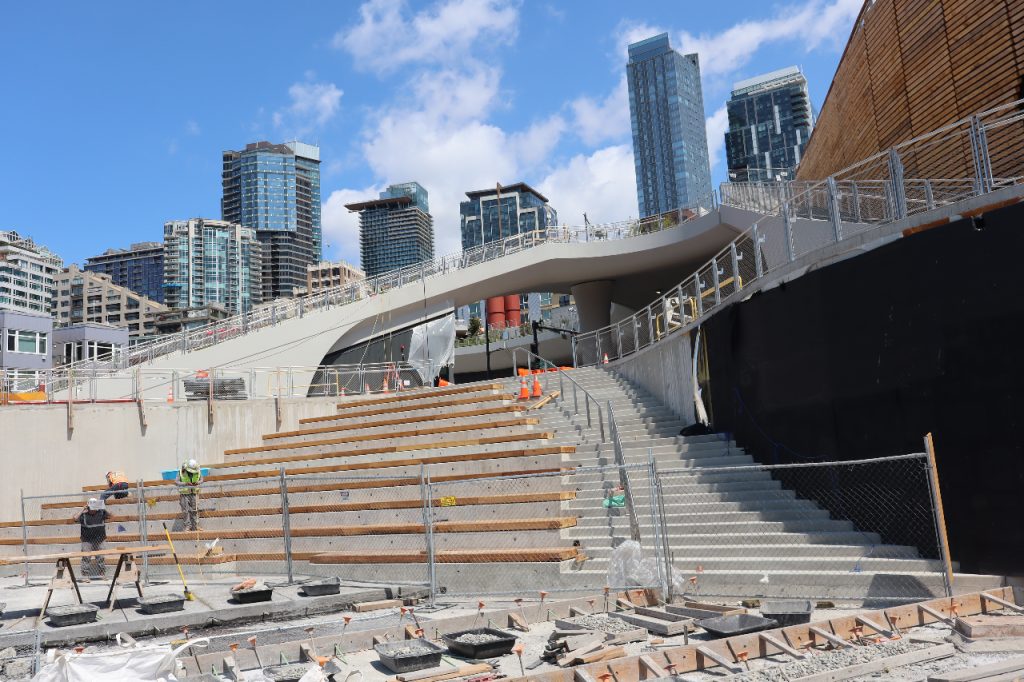
On the heels of these elements are final pieces of the project, including a new set of all-gender restrooms at the foot of Union Street, which will be staffed from 7am to 10pm daily. Pier 58, the former home of Waterfront Park, is being rebuilt to include a new children’s playground and additional public space at the water’s edge. Meanwhile, up the bluff at Pike Place Market, a newly rebuilt Victor Steinbrueck Park is expected to open in August.
One of the last pieces of the waterfront project, an upgrade to Bell Street that features protected bike lanes that will get riders closer to downtown’s broader bike network, is set to start construction in the coming months. Near that project, a small patch of SDOT property that Seattle City Light had been eyeing for a surface EV charging lot before backing off that idea, sits vacant waiting for a future use.
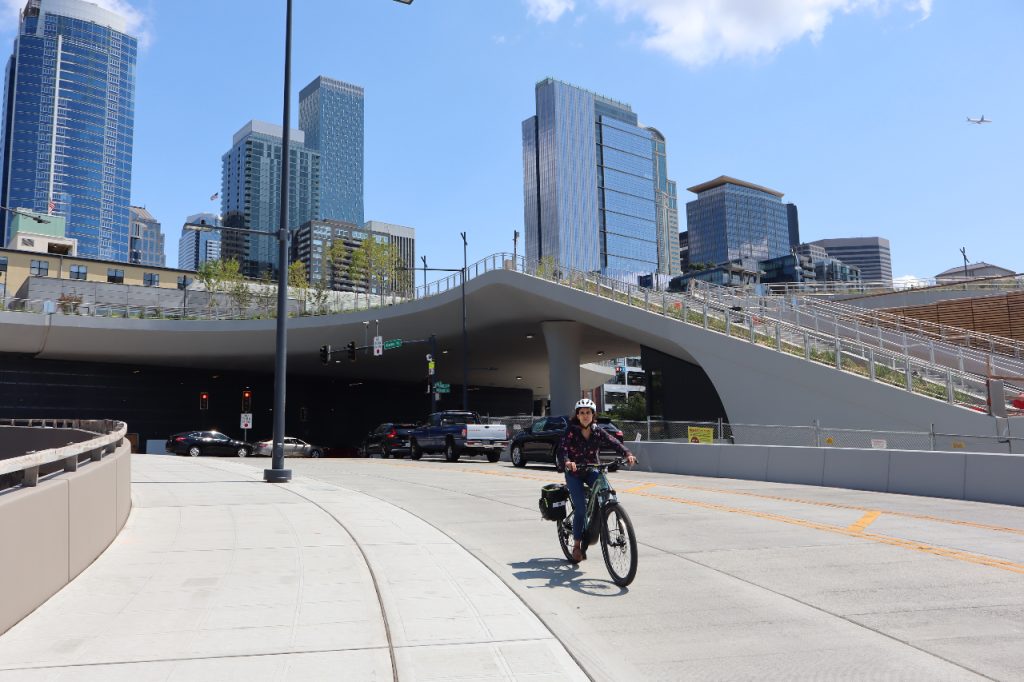
While there are still a few months of headaches ahead for multimodal travelers trying to navigate the waterfront, the entire project is set to wrap up by next spring. The city will likely cheer the end of a long construction period, even if they have mixed feelings about the waterfront project as a whole, which some urbanists have argued prioritized car access too much. The long road to a fully separated bike lane through the project has had the effect of underlining that complaint.
Ryan Packer has been writing for The Urbanist since 2015, and currently reports full-time as Contributing Editor. Their beats are transportation, land use, public space, traffic safety, and obscure community meetings. Packer has also reported for other regional outlets including BikePortland, Seattle Met, and PubliCola. They live in the Capitol Hill neighborhood of Seattle.

